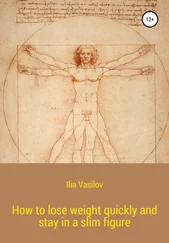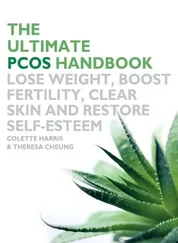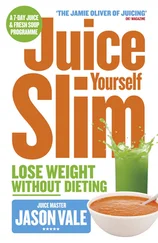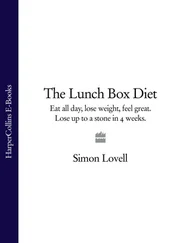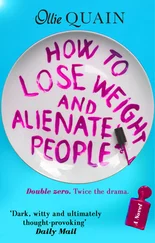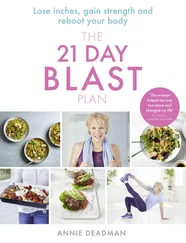Inevitably, this means talking about calories. However, it is possible to lose weight easily by being calorie-conscious and without having to become a calorie slave
must know
Calorie guides
Buy a calorie counter book for an at-a-glance guide to thousands of everyday foods. These are available at most newsagents and bookshops. Don’t guesstimate!
Bulky, watery foods like salad vegetables make good low-calorie fillers in a slimming diet.
must know
Diet or exercise?
When thinking about losing weight, men and women tend to have different approaches: women say it’s ‘time to start the diet’ and men say it’s ‘time to hit the gym’. It is perfectly possible to create an energy deficit by changing your diet alone, or just by doing a lot more exercise (although the exercise-only route is slower). The perfect combination for health and weight loss is to do both: to make some small changes to your diet, and to become a bit more active as often as possible.
Where does it all go?
The body uses the food we eat in three main ways: for growth; to replace damaged or worn-out tissues; and to fulfil all the body’s daily functions, which can range from breathing to ballroom dancing. The amount of energy needed from food to keep the body going, without gaining or losing weight, is called the basal metabolic rate (BMR). Any energy (calories) which is taken in over and above the requirements of the BMR is stored – and, as the last chapter showed, this is one thing at which the body is very efficient.
Once food has been digested, any surplus energy is stored either as glycogen – a short-term energy source, which is stored in the liver and the muscles – or as fat, which is stored in ‘fat depots’ under the skin, around the kidneys and in the abdomen. There is a limit as to how much glycogen can be stored before it is released back into the bloodstream to be used, but there is no limit to the amount of fat that can be stored. Fat cells get bigger, multiply and form adipose tissue which can eventually present a threat to our health.
It takes about 3,500 calories surplus to the requirements of the BMR to create 1lb (454 g) of stored energy (otherwise known as fat). So an individual whose BMR is 2,500 calories per day, and who eats 3,000 calories’ worth of food per day without changing his or her activity level in any way, could expect to put on a pound a week (7x500 = 3,500 calories). In practice, our body weight fluctuates from day to day and even at different times of the day, which is why it is best to weigh yourself only once a week at the same time –jumping on the scales more often can be misleading. However, overtime, a steady over-supply of calories without an increase in activity to compensate will surely result in a weight gain.
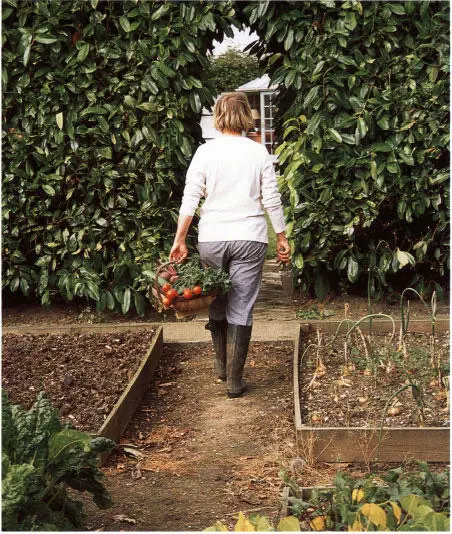
Healthy home-grown vegetables: fantastic for taste, freshness and providing valuable nutrients.
And in the same way, creating an energy deficit, so that more energy is expended than the BMR requires, will equally surely result, overtime, in weight loss. So, again, someone whose BMR is 2,500 calories and who eats 2,000 calories’ worth of food each day could expect to lose a pound a week.
Find your balance
There are four steps to working out your basal metabolic rate (BMR):
1 Assessing the resting metabolic expenditure (RME).
2 Making an allowance for activity.
3 Adding in 10 per cent for the energy used in digesting food.
4 Totalling it all up.
As you will see from the instructions and the example given below, this is much easier than it sounds.
Step 1
Use the table to read off your RME. The differences in the table are accounted for by gender and age: generally, men need more calories than women to maintain their weight because they have a higher percentage of muscle tissue, which burns fuel more efficiently than fat. Age is a factor, too, because the amount of energy the body needs for maintenance peaks at the age of about 25 and declines gradually after that, at a rate of about two per cent per decade.
Your RME
| Age – Men |
RME equation |
| 18–30 |
15.3 x weight (kg) + 679 |
| 30 –60 |
11.6 x weight (kg) + 879 |
| 60 and above |
13.5 x weight (kg) + 487 |
| Age – Women |
RME equation |
| 18–30 |
14.7 x weight (kg) + 496 |
| 30 –60 |
8.7 x weight (kg) + 829 |
| 60 and above |
10.5 x weight (kg) + 596 |
Step 2
Factor in your activity level, based on what you normally spend most of the day doing. The guidelines and calculation are as in the table opposite (top).
Multiply your RME from Step 1 by the activity factor to find the number of calories needed for activity each day.
Your activity level
| Usual daily activities |
Activity Level |
Activity Factor |
| Desk job or light housework; driving; reading; watching TV |
Very light |
0.2 |
| Childcare; light exercise, e.g. walks; moderate housework; light manual work, e.g. mechanic, waiter |
Light |
0.3 |
|
| Moving about all day; spring-cleaning; heavy gardening; active sports |
Moderate |
0.4 |
| Heavy manual work, e.g. building, digging high-energy sport, e.g. football |
Heavy |
0.5 |
Step 3
Add together your RME figure and your ‘activity calories’ figure and divide by 10 to find the calories needed for digestion.
Step 4
Add together your RME figure, ‘activity calories’ figure and ‘digestion calories’ figure in order to find your BMR (basal metabolic rate) – the total number of calories that are needed each day to maintain your weight.
To lose weight steadily, the best combination is to reduce your calorie intake and to increase your calorie expenditure by making changes to your daily diet and activity levels.
must know
Working out BMR
Jane is a 30-year-old mother of two with a part-time office job. She weighs 76 kg (12 stone).
 In step 1, Jane works out her RME to be: 8.7 x 76 + 829 = 1,490 calories.
In step 1, Jane works out her RME to be: 8.7 x 76 + 829 = 1,490 calories.
 In step 2, she estimates her activity level as ‘light’ and her activity factor as 0.3. So the calories she needs for activity are: 1,490 x 0.3 = 447
In step 2, she estimates her activity level as ‘light’ and her activity factor as 0.3. So the calories she needs for activity are: 1,490 x 0.3 = 447
 In step 3, Jane adds her RME and activity calories together and divides by 10 to find the calories she needs for digestion: 1,490 + 447 = 1,937 10 = 193
In step 3, Jane adds her RME and activity calories together and divides by 10 to find the calories she needs for digestion: 1,490 + 447 = 1,937 10 = 193
 In step 4, she adds the three totals together to find her BMR (total daily calorie needs): 1,490 + 447 + 193 = 2,130 calories.
In step 4, she adds the three totals together to find her BMR (total daily calorie needs): 1,490 + 447 + 193 = 2,130 calories.
Keeping a food diary
Having worked out how many calories you need to maintain your current weight, the next step is to work out how many calories you are taking in as food. Nutritionists recommend that the best way to do this is to keep a food diary. To get a full picture of calorie intake it is important to keep the diary for at least a week, or longer if you feel it would be helpful. Keeping a food diary sounds easy but, in practice, researchers have found that people who are asked to record their food intake almost always under-report what they actually eat. However, to identify patterns of where calories are coming from and where easy savings can be made, it is important to be as detailed and honest as possible – after all, no one else will see the diary. It is also important to eat and drink exactly as usual and not to change your normal routine in any way, as you need to keep track of all the occasions during the week when you might have an opportunity to save calories.
Читать дальше
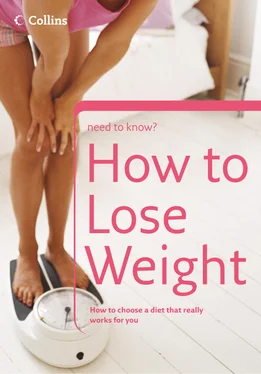

 In step 1, Jane works out her RME to be: 8.7 x 76 + 829 = 1,490 calories.
In step 1, Jane works out her RME to be: 8.7 x 76 + 829 = 1,490 calories.
